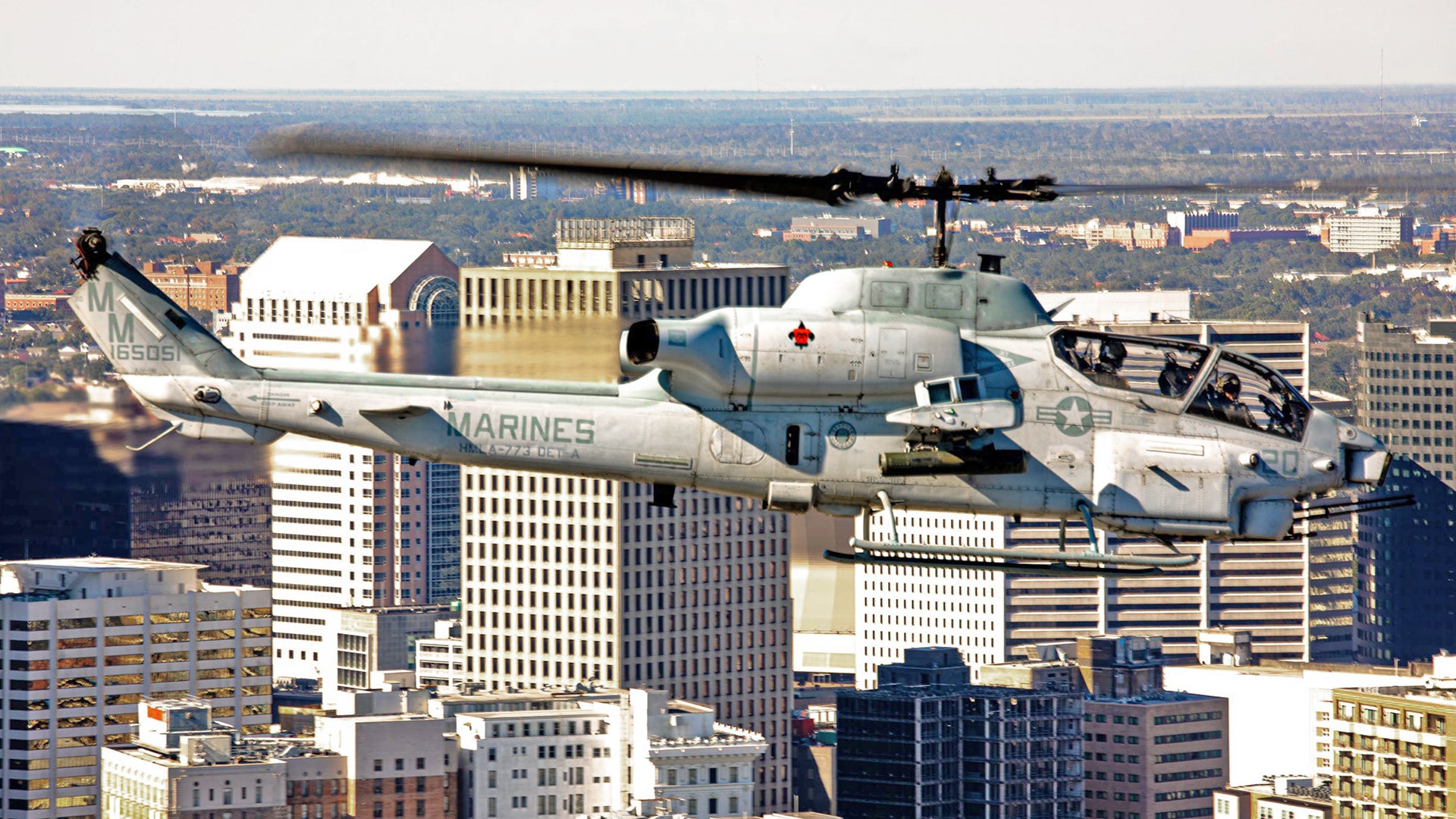The curtain has finally come down on one of the U.S. Marine Corps’ most battle-hardened helicopters. The branch has officially retired the Bell AH-1W Super Cobra from its ranks, after over three decades of service that included combat operations during Operations Desert Storm, Iraqi Freedom, and Enduring Freedom in Afghanistan, among other campaigns.
An official final flight for the AH-1W took place at Naval Air Station Joint Reserve Base New Orleans, Louisiana, on October 14, 2020, as part of the “Whiskey Sundown Ceremony.” This also included a photo sortie over New Orleans together with its successor, the AH-1Z Viper. The last “Whiskey” sortie was performed by Detachment A of Marine Light Attack Helicopter Squadron 773, the “Red Dogs,” part of the Reserve Forces, based at New Orleans.
As the U.S. Marine Corps’ premier attack helicopter, the Super Cobra’s career included 933,614 flight hours as of August 2020, according to a press release from the service.

“The AH-1W Super Cobra has served admirably and leaves a remarkable legacy of on-time, on-target attack helicopter support for our Marines,” said Marine Corps Colonel David Walsh, the program manager for Light/Attack Helicopter Programs (PMA-276). “Although the AH-1W chapter is closing, the AH-1Z Viper stands ready with even greater capability to support our Marines for years to come.”
“We are tremendously proud of the capabilities the AH-1W has brought to the United States Marines for the past 34 years,” added Michael Deslatte, H-1 Bell Program Manager. “The Super Cobra’s tremendous legacy is a testament to the excellence and dedication the men and women at Bell put into these platforms for generations and we look forward to continuing that legacy for years to come.”
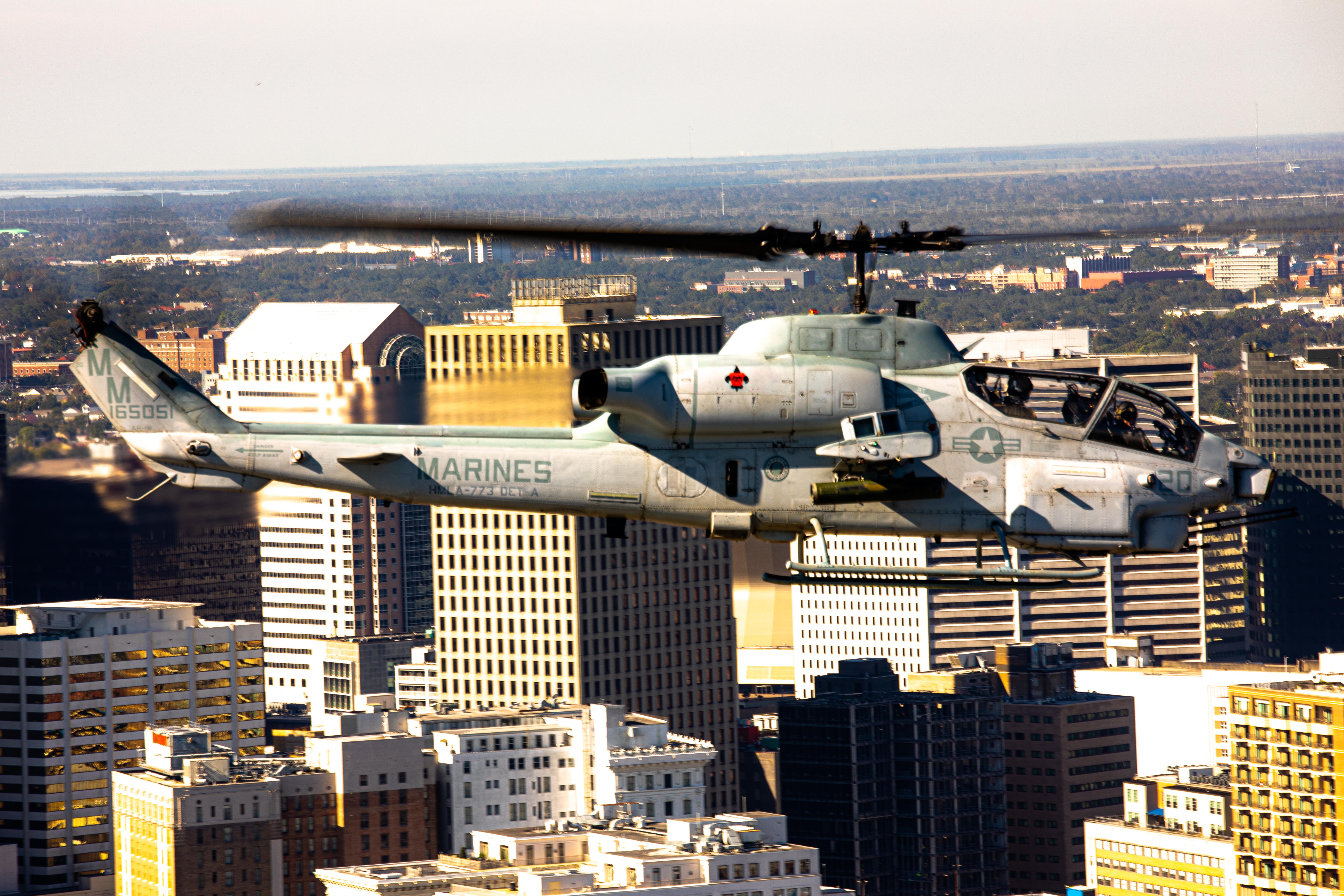
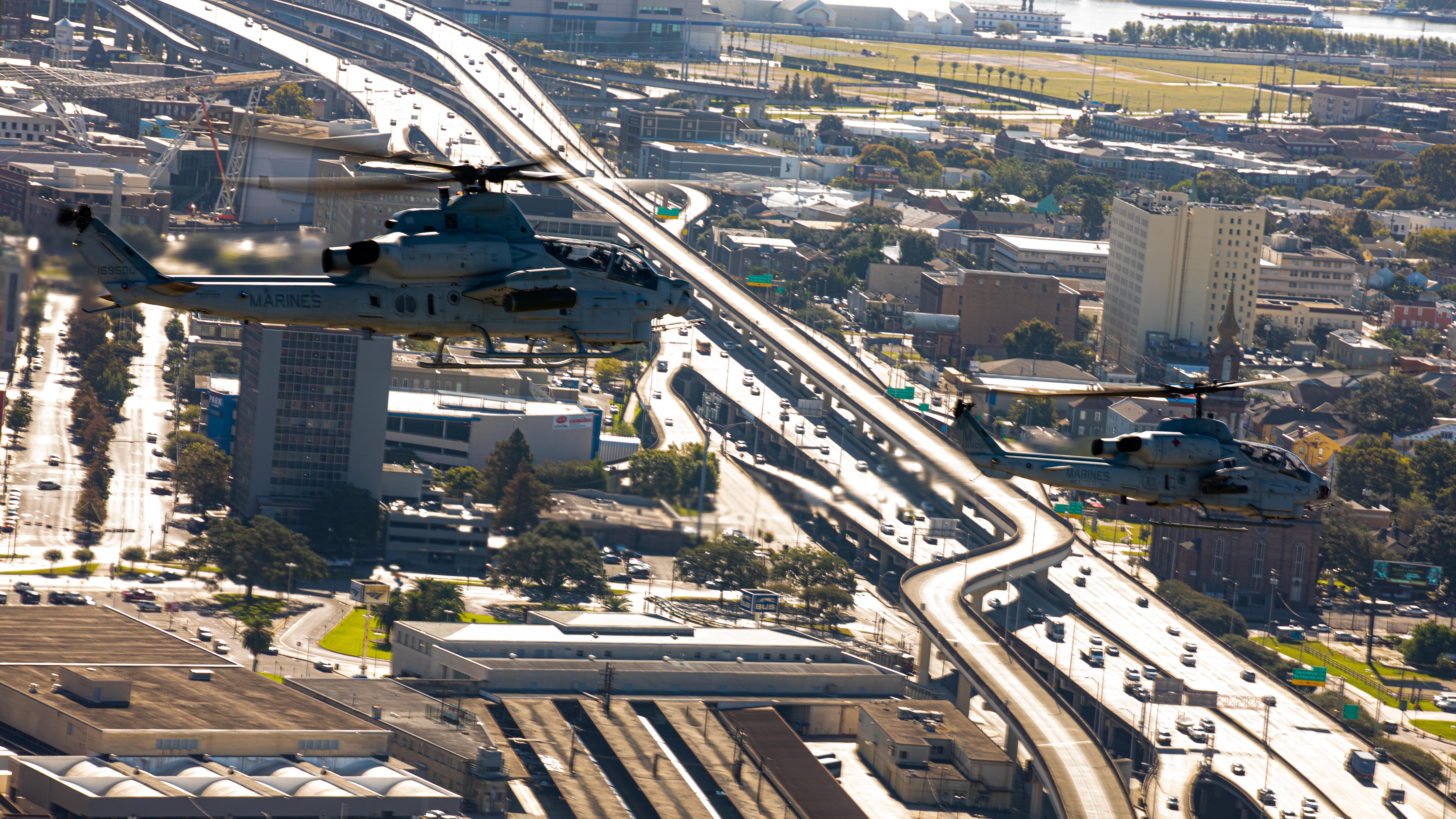
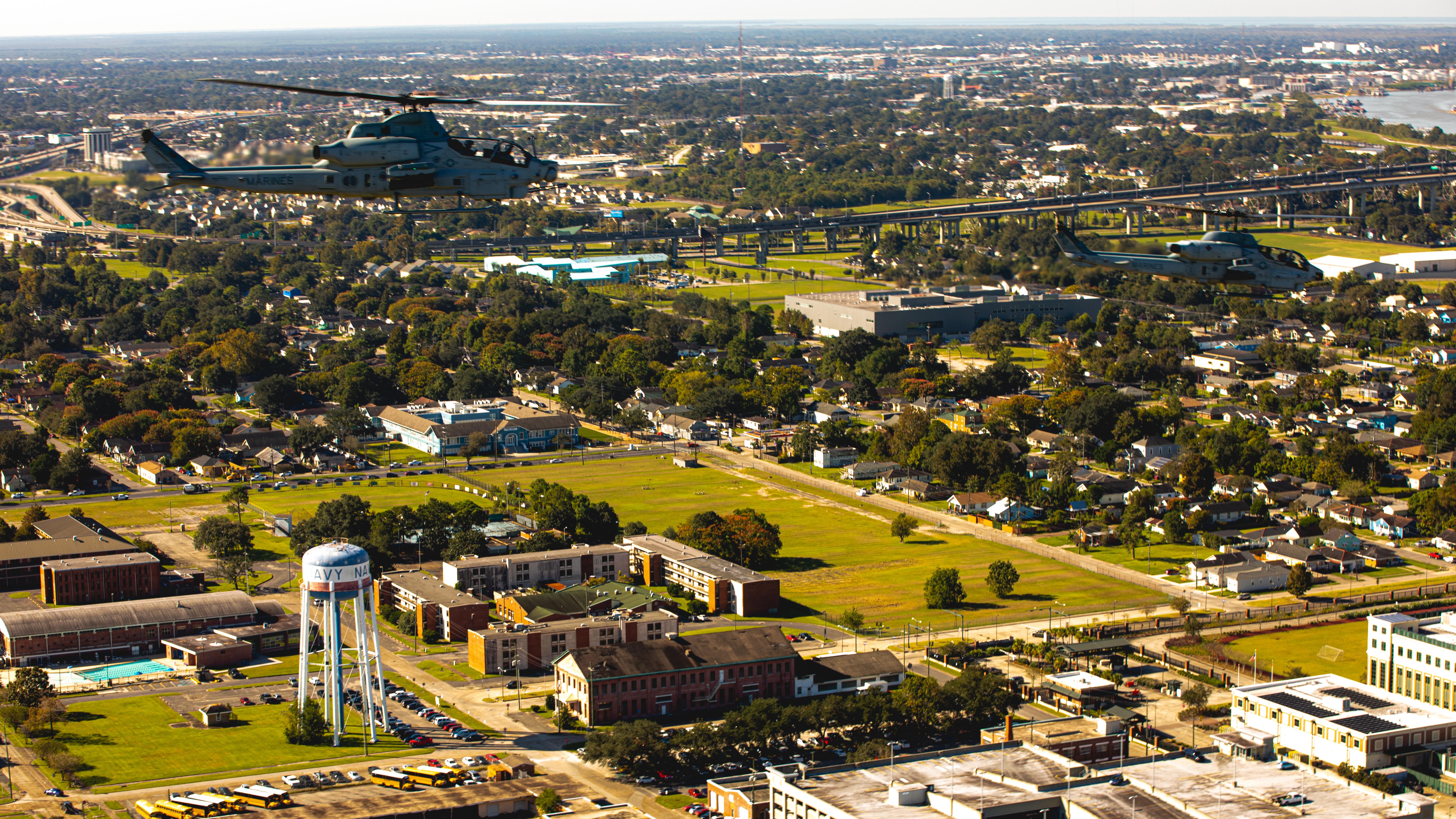
The Marines first flew the single-engine AH-1G — on loan from the U.S. Army — in Vietnam in 1969, before introducing the twin-engine AH-1J Sea Cobra that entered service in 1971 and which saw combat at the end of the conflict in Southeast Asia, including during Operation Frequent Wind, the evacuation of American diplomatic personnel from the U.S. Embassy in Saigon in April 1975. The Marines then got the improved AH-1T version in 1976, this adding a precision weapons capability with the BGM-71 TOW (Tube-launched, Optically tracked, Wire-guided) anti-tank missile.
The story of the “Whiskey,” meanwhile, can be traced back to the AH-1T+ demonstrator. This version had originally been developed for Iran under the Shah. The Iranians were looking for an enhanced AH-1J that would incorporate new General Electric T700-GE-700 engines and transmission of the Bell Model 214ST helicopter. There were also plans for license-production of the 214ST, which you can read about more in this past War Zone feature, in Iran.
The overthrow of the Shah in 1979 put an end to any Iranian AH-1T+ ambitions, but the U.S. Marine Corps’ plans at that time to acquire a navalized version of the U.S. Army’s AH-64 Apache would also soon run into its own problems. The T+ variant emerged as a suitable replacement after Congress refused to grant any funds for a Marine procurement of the AH-64 in 1981.
Fortunately, Bell had meanwhile continued to work on the AH-1T+ on its own. The helicopter had completed a maiden flight in April 1980 powered by a pair of 1,258-shaft-horsepower General Electric T700-GE-700 engines. This is notably the same engine found on initial AH-64s, as well as early versions of the UH-60 Black Hawk transport helicopter.
The AH-1T+ then returned to the air with T700-GE-401s, a version of the T700 optimized for maritime environments, on November 16, 1983, at Bell’s Flight Research Center in Arlington, Texas. By that time, the helicopter was effectively serving as the AH-1W prototype and the new powerplant had been integrated under a $4.1-million contract.
Besides the new engines, the prototype added a raft of other new features, most prominently bulged “cheek” fairings accommodating electronics associated with the TOW missile, relocated from their previous position in the tail boom, plus large exhaust suppressors to reduce the infrared signature.
As well as the TOW, the prototype also trialed AIM-9 Sidewinder air-to-air missiles and AGM-114 Hellfire air-to-ground missiles, both of which would eventually find places in the arsenal of the production aircraft. Other additions included an AN/ALQ-144 infrared-guided missile countermeasure device, as well as AN/ALE-39 chaff and flare dispensers. New electronics in the nose meant the new attack helicopter could undertake attack missions day or night.
The first production version of this helicopter was designated AH-1W, for which the Marines had placed orders for an initial batch of 44, plus a single TAH-1W training helicopter. Bell delivered the first of these to the Marines on March 27, 1986, and delivered the final aircraft in 1999, ultimately providing a fleet of 179 aircraft. By procuring AH-1Ws, the Marines retained valuable commonality with the “Huey” fleet, an advantage that is optimized today with the AH-1Z and UH-1Y.
The AH-1W went on to serve with distinction during almost three decades of combat in theaters that included Afghanistan, Iraq, Libya, and Somalia. A succession of upgrades ensured the effectiveness of the gunship until the end of its U.S. Marine Corps career.
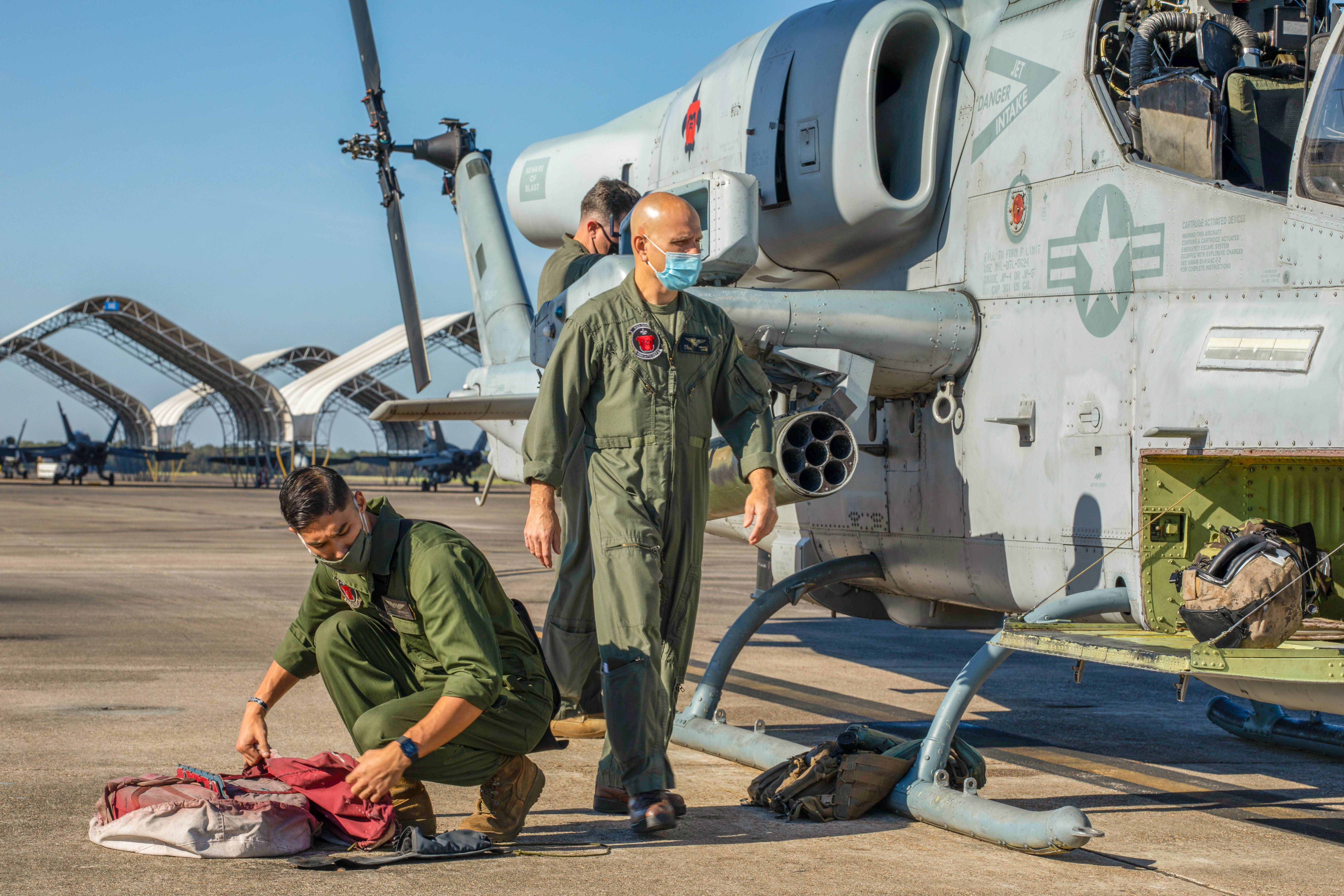
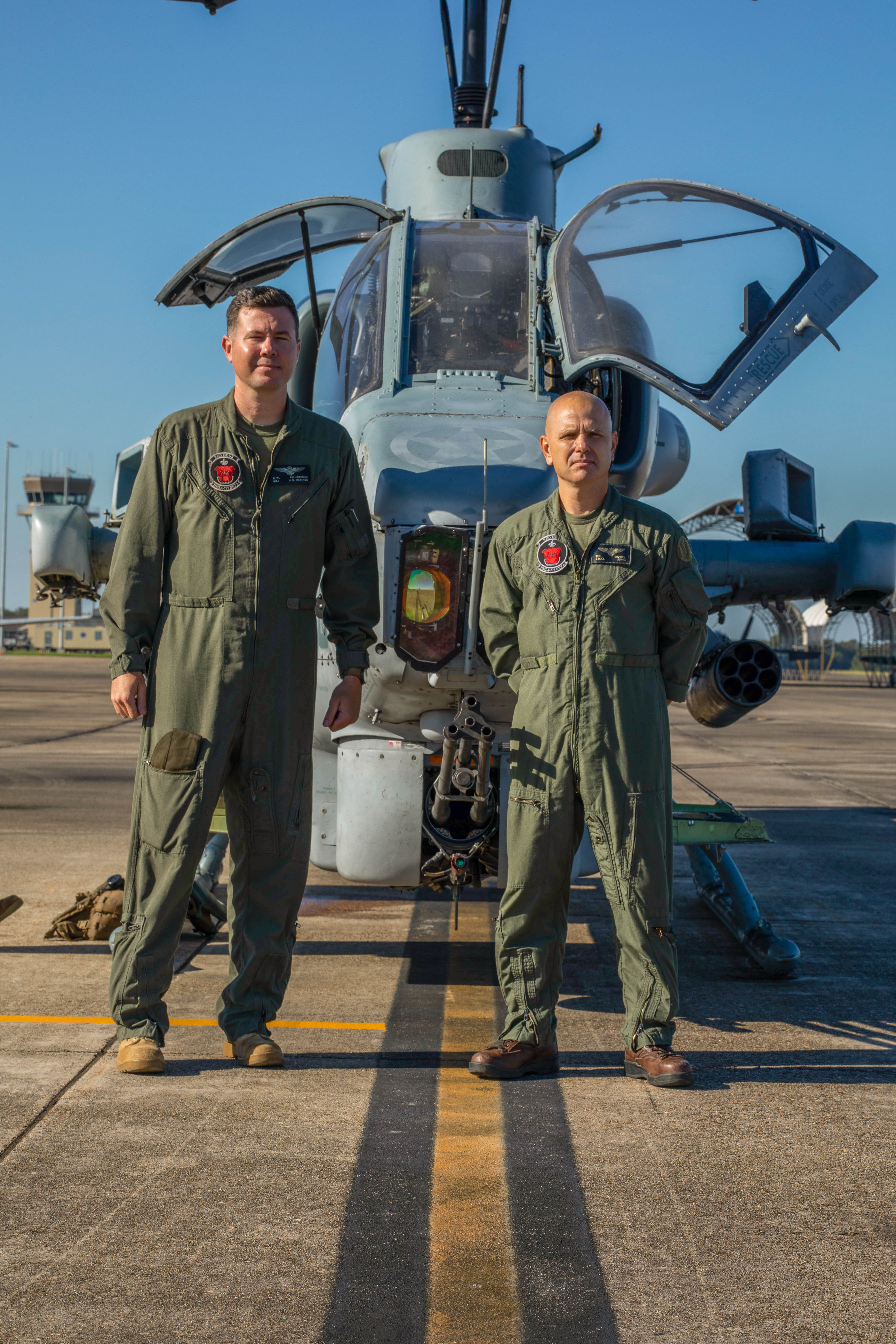

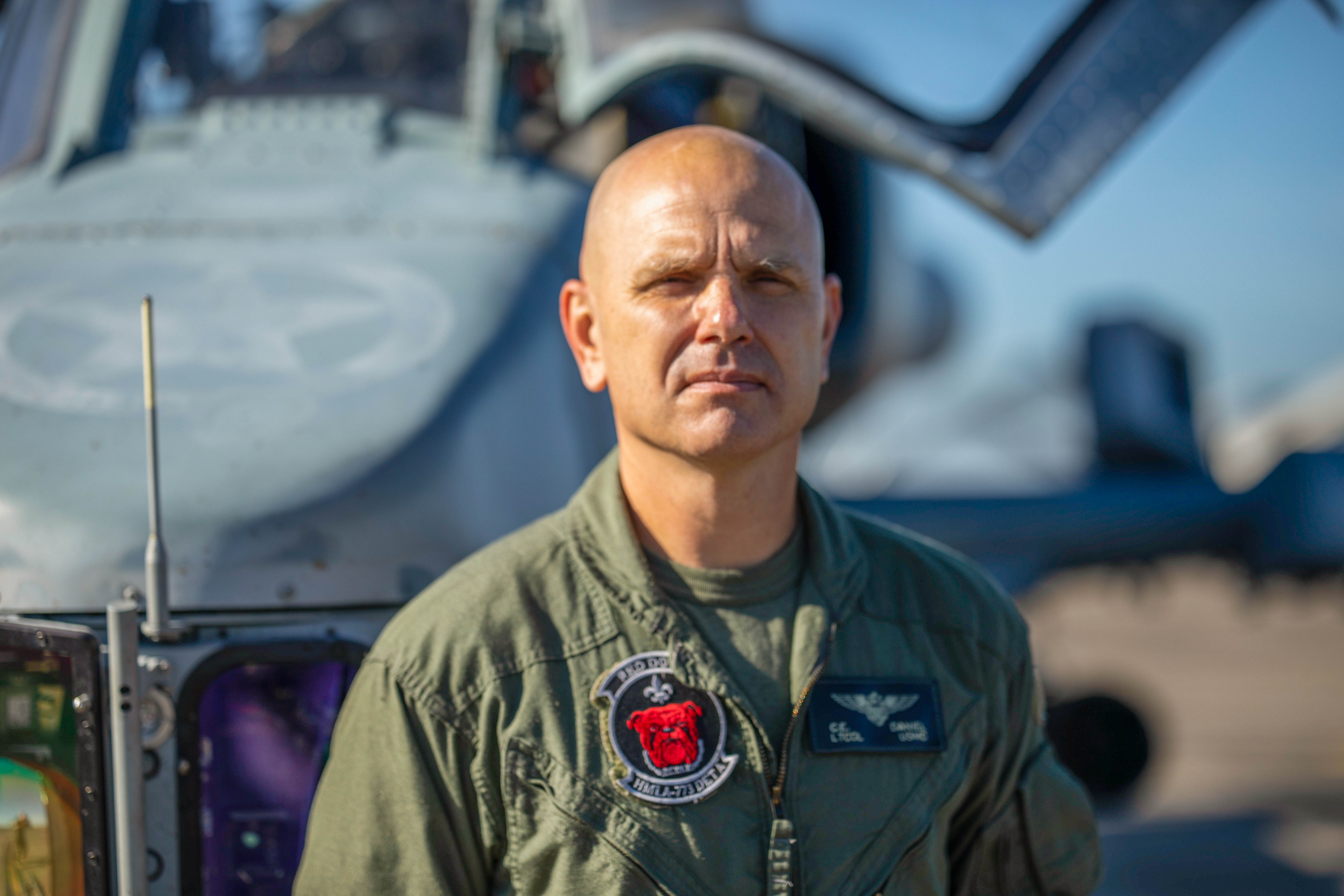
Retirement may mean the official end of the AH-1W in Marine Corps service, but some of the venerable “Whiskey” airframes fly on after they were remanufactured as significantly upgraded AH-1Zs.
The AH-1Z Viper that has replaced the Marine AH-1W began life as a “four-bladed Whiskey” and has been introduced together with the UH-1Y Venom, with which it shares 84 percent parts commonality, as part of the H-1 Upgrade Program. The vastly more capable AH-1Z entered U.S. Marine Corps service in 2010, and you can read all about its attributes here.
True AH-1Ws will continue to serve abroad, as well, with Taiwan and with Turkey. There’s also still a chance that surplus U.S. Marine Corps “Whiskeys” could end up being transferred to one or more foreign air arms, extending this classic type’s illustrious legacy still further, perhaps with its capabilities further enhanced by additional upgrades. While the Marines announced plans to offload most of the “Whiskey” fleet in the past, so far this has not resulted in any export sales.
While some AH-1Ws may continue to fly with the Marines in spirit after getting rebuilt as “Zulus,” the type’s official days of flying with the Corps are now over, after 35 years of service.
Contact the author: thomas@thedrive.com
